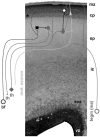Early diagnosis and early intervention in cerebral palsy
- PMID: 25309506
- PMCID: PMC4173665
- DOI: 10.3389/fneur.2014.00185
Early diagnosis and early intervention in cerebral palsy
Abstract
This paper reviews the opportunities and challenges for early diagnosis and early intervention in cerebral palsy (CP). CP describes a group of disorders of the development of movement and posture, causing activity limitation that is attributed to disturbances that occurred in the fetal or infant brain. Therefore, the paper starts with a summary of relevant information from developmental neuroscience. Most lesions underlying CP occur in the second half of gestation, when developmental activity in the brain reaches its summit. Variations in timing of the damage not only result in different lesions but also in different neuroplastic reactions and different associated neuropathologies. This turns CP into a heterogeneous entity. This may mean that the best early diagnostics and the best intervention methods may differ for various subgroups of children with CP. Next, the paper addresses possibilities for early diagnosis. It discusses the predictive value of neuromotor and neurological exams, neuroimaging techniques, and neurophysiological assessments. Prediction is best when complementary techniques are used in longitudinal series. Possibilities for early prediction of CP differ for infants admitted to neonatal intensive care and other infants. In the former group, best prediction is achieved with the combination of neuroimaging and the assessment of general movements, in the latter group, best prediction is based on carefully documented milestones and neurological assessment. The last part reviews early intervention in infants developing CP. Most knowledge on early intervention is based on studies in high-risk infants without CP. In these infants, early intervention programs promote cognitive development until preschool age; motor development profits less. The few studies on early intervention in infants developing CP suggest that programs that stimulate all aspects of infant development by means of family coaching are most promising. More research is urgently needed.
Keywords: cerebral palsy; early diagnosis; early intervention; general movements assessment; neuroplasticity.
Figures



References
-
- Rosenbaum P, Paneth N, Leviton A, Goldstein M, Bax M, Damiano D, et al. A report: the definition and classification of cerebral palsy April 2006. Dev Med Child Neurol (2007) 109(Suppl):8–14 - PubMed
Publication types
LinkOut - more resources
Full Text Sources
Other Literature Sources
Miscellaneous

